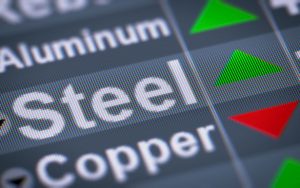A Novel Approach to Predicting Price Direction
Price forecasters are always looking out for apparently unrelated factors that correlate to the price movement they are tracking.
Need buying strategies for steel? Request your two-month free trial of MetalMiner’s Outlook
Sometimes the relationship seems bizarre.
At first sight, a link between oil prices and aluminum prices appears tenuous until you consider that the oil price is taken as a proxy for energy prices in general, particularly as fuels like liquefied natural gas (LNG) can be linked to the crude oil price.
So, here is one for you. If you would like a leading indicator to price movements for coal, steel and energy-intensive base metals, the South China Morning Post suggests, or at least links, pollution levels in major Chinese cities to production levels of steel and aluminum.
According to the argument, if pollution levels are high it is because production is high, and if production is high then the market is going to be oversupplied and prices will fall.
The South China Morning Post compares pollution levels this year to last around Beijing and other major eastern seaboard cities. Last winter, local government officials in Beijing restricted — or simply banned — the burning of coal across much of northern China, the article reports. Consequently, in early December average pollution levels in Beijing were less than half the concentrations seen in the previous two years.
Beijing’s citizens no doubt welcomed the blue skies. Unfortunately, coal is not just used as an energy source for electricity generation — it is also burned as fuel by millions to heat their homes, workplaces and schools, the South China Morning Post reports.
With industry slowing and reports of school children facing hardship, Beijing relented, and by late December to early January, the smoke had returned.
This year, Beijing announced a new plan in which 28 cities around Beijing would be ordered to cut their production of steel and aluminum by between one-third and one-half in the hope of restricting local output of energy-intensive metals production. The idea was production may be displaced to areas of the country with more spare capacity and the resulting pollution limited in the principal cities.
But it would seem that China has more spare capacity than the government allowed for. Although Beijing has done much to close outdated steel plants, the country still has approximately 1 billion tons of production capacity, yet steel mills are operating at below 70% capacity utilization.
Steel and aluminum mills are continuing to churn out metal; there has been no squeeze on supply. Pollution levels are back to where they were in previous years and the trend since late September — during which aluminum prices have fallen some 9%, thermal coal down 14%, and steel rebar by 25% — looks set to continue.
MetalMiner’s Annual Outlook provides 2019 buying strategies for carbon steel
Tracking daily pollution levels in Beijing is a relatively simple affair (here is one useful site tracking pollution levels). Helpfully, the U.S. State Department also reports a similar feed.




Leave a Reply